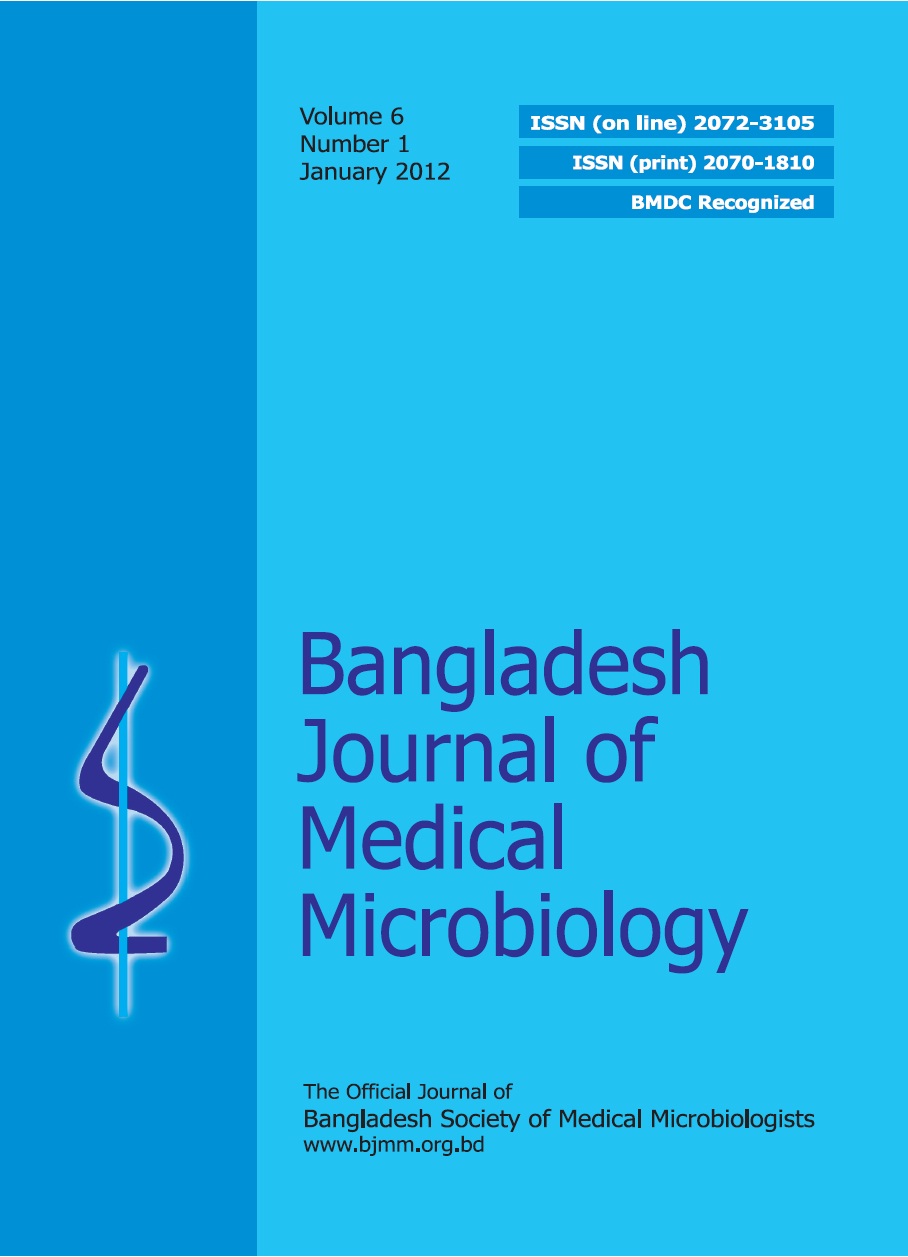Enterococcal Virulence Determinants In Urinary Tract Infection Patients
DOI:
https://doi.org/10.3329/bjmm.v6i1.19361Keywords:
Enterococci, biofilm, Urinary Tract InfectionAbstract
Urinary tract infection caused by Enterococci has become frequent occurrences in health care settings. Currently they emerged with increasing resistance to multiple antibiotics. Haemolysin, gelatinase and biofilm production are some markers that have been proposed as possible Enterococcal virulence factors. In view of the increasing importance of Enterococcal infection, the present study was designed to isolate and identify the Enterococci to the species level from urine of urinary tract infection patients and to investigate their possible virulence factors. Biofilm was detected on polystyrene microtitre plate to see the adherence of microorganism. Haemolysin production and gelatin hydrolysis detected by standard microbiological method. Fifty nine enterococcal isolates were speciated by conventional microbiological method and examined for their ability to form biofilm by microtitre plate assay. In this study, biofilm formations by Enterococci were found in 83.33% isolates from catheterized and 56.09% from non-catheterized patients. Aong them, E.faecalis & 50% E.faecium produced biofilm. About 43.63% E.faecalis & 10% E.faecium produced haemolysin and only one isolate were found to be gelatinase positive. Frequency of virulence factors (VFs) in combination was observed in this study. Two VFs (haemolysin and biofilm) were observed in 27.11% in combination and 3 VFs ( haemolysinm biofilm and gelatinase) were present in 1.69% isolates. These results suggest that although there may not be an absolute role for individual virulence determinants in infectivity, combinations of factors may play a role in allowing a biofilm infection to be more resistant to therapy.
DOI: http://dx.doi.org/10.3329/bjmm.v6i1.19361
Bangladesh J Med Microbiol 2012; 06(01): 14-17
Downloads
242
212

